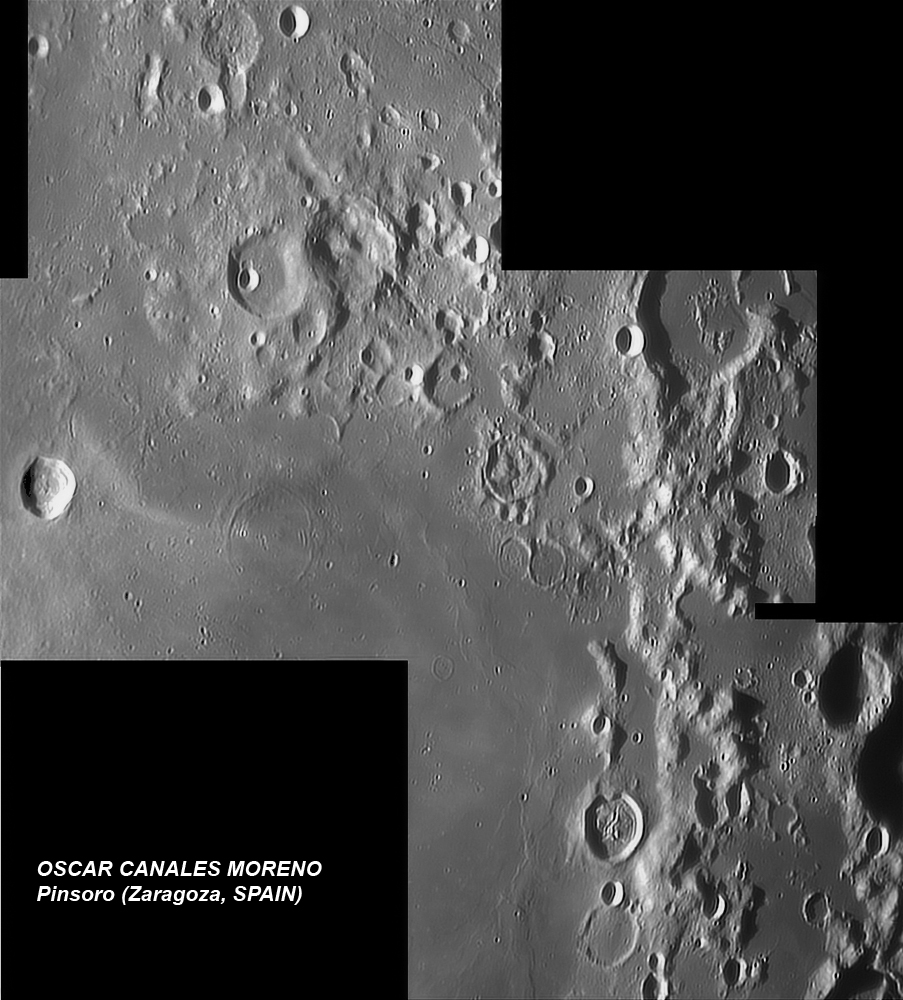image byOscar Canales Moreno, Pinsoro, Spain
Yesterday’s LPOD was centered on the region immediately east of here, and today’s image by Oscar takes us to a corner of Nectaris not often imaged. That is because the diagonally opposite Altai Scarp is dramatic, and large craters there also attract attention. But this side of the basin, with its topo-free rim and more battered appearance is also worth a look. Use the whole basin view to see that all of this region is inside the main Nectaris rim. Everything here has been formed since about 3.9 billion years ago, just like the area inside the Altai Scarp, but by chance this side lacks a Theophilus, Fracastorius or Piccolomini to delight the eye. The fact that the mare-sides of many of the mare-edge craters have low or missing rims demonstrates that the mare floor did subside, but there are no concentric rilles as at Humorum and many other basins. The lava in and around Nectaris, like that near Crisium, generally lacks small volcanic features such as domes, cones and sinuous rilles. I wonder if that is because there is not much lava, period, or if it relates to its composition? Mare Nectaris basalts are very low in titanium and iron - are most domes in high titanium basalts? But there are at least two volcanic features in this corner of Nectaris - Bohnenberg (at bottom right) is nicely seen to be a floor-fractured crater. And hardly hinted at is the pyroclastic deposit around the northern part of Daguerre.
Technical Details:
Nov 9, 2006. Newton Skywatcher 250mmEQ6 f:25 + Mintron 12V6-EX Videocamera + Canon MV500i + W25 Red Filter + VirtualDub for deinterlace and video capture + Registax 4 + Photoshop + Neat Image. 4 image mosaic, each of 350/3000 images at 50 img/seg
Related Links:
Rükl plates 47 & 58
A low Sun view
Yesterday's LPOD: Land of Milk and Honey and Rilles
Tomorrow's LPOD: What a Difference Two Weeks Makes
COMMENTS?
Register, Log in, and join in the comments.




